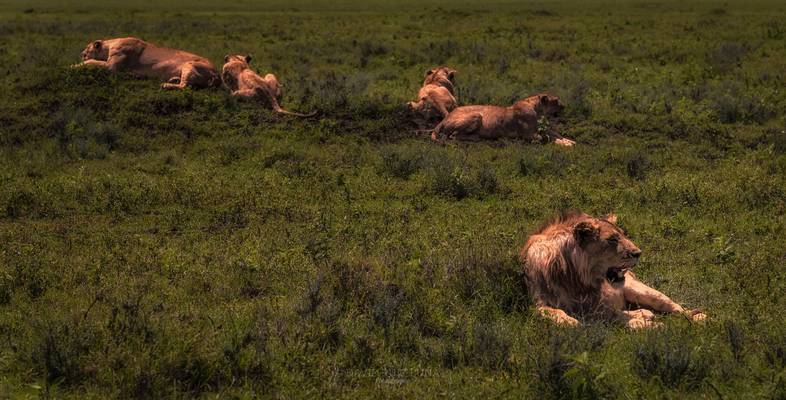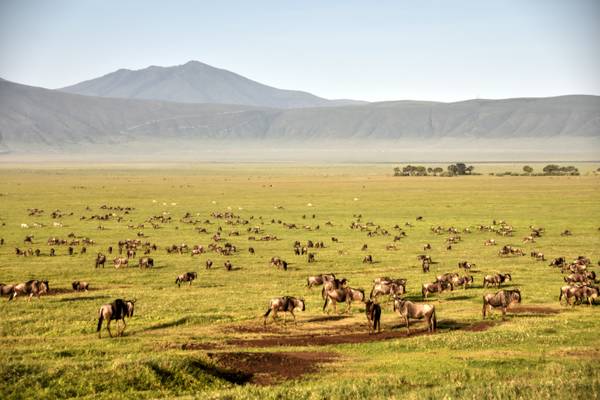
Tanzania »
Ngorongoro Conservation Area
Ngorongoro Conservation Area is a UNESCO World Heritage Site located in Tanzania. It is a unique and breathtaking destination that offers visitors a chance to experience the beauty of nature and wildlife. The area is home to the Ngorongoro Crater, which is the largest unbroken caldera in the world. The crater is a natural wonder that attracts photographers from all over the world. The area is also home to a variety of wildlife, including lions, elephants, zebras, and wildebeests. The conservation area offers several photography locations, including the crater rim, the Serengeti plains, and the Olduvai Gorge. These locations provide photographers with stunning views of the landscape and wildlife, making it a must-visit destination for any photography enthusiast.

by David ruiz luna
The Ngorongoro crater is one of the largest volcanic calderas in the world. The crater houses about 25,000 animals of very different species. It is considered one of the smaller areas where it is possible to see the big five, the five most representative animals of Africa: the lion, the leopard, the elephant, the buffalo and the rhinoceros (if the hippopotamus is included, then it should be enlarged the denomination to the big six). In addition, in the circle it is possible to observe, with a bit of luck, the exotic black rhinoceros, possibly the biggest attraction of the park.
Ngorongoro Conservation Area, Tanzania, February 2016

by Enrica Fabriani
La caldera del Ngorongoro es el resultado de una explosión volcánica ocurrida hace millones de años. Estas tierras abundantes en pastos son el hogar de multitud de especies animales. El Ngorongoro es Patrimonio de la Humanidad desde 1979.

by David ruiz luna
The Ngorongoro crater is one of the largest volcanic calderas in the world. The crater houses about 25,000 animals of very different species. It is considered one of the smaller areas where it is possible to see the big five, the five most representative animals of Africa: the lion, the leopard, the elephant, the buffalo and the rhinoceros (if the hippopotamus is included, then it should be enlarged the denomination to the big six). In addition, in the circle it is possible to observe, with a bit of luck, the exotic black rhinoceros, possibly the biggest attraction of the park.
Ngorongoro Conservation Area, Tanzania, February 2016
Photo Cover LEVEL -5 :PEACEKEEPERS September 2020
Photo Cover LEVEL - 6 : PEACEMAKERS November 2020
Photo Cover LEVEL - 7 : GIVE "PEACE" A CHANCE January 2021
Photo Cover *LEVEL - 8 : PEACE CHOICE : FINAL DESTINATION February 2021

by David ruiz luna
The wildebeests, also called gnus, are a genus of antelopes, scientific name Connochaetes. They belong to the family Bovidae, which includes antelopes, cattle, goats, sheep and other even-toed horned ungulates. Connochaetes includes two species, both native to Africa: the black wildebeest, or white-tailed gnu; and the blue wildebeest, or brindled gnu.
Ngorongoro Conservation Area, Tanzania, February 2016
Thanks to all Phoide contributors to Ngorongoro Conservation Area!
Most notably David ruiz luna and Enrica Fabriani.
